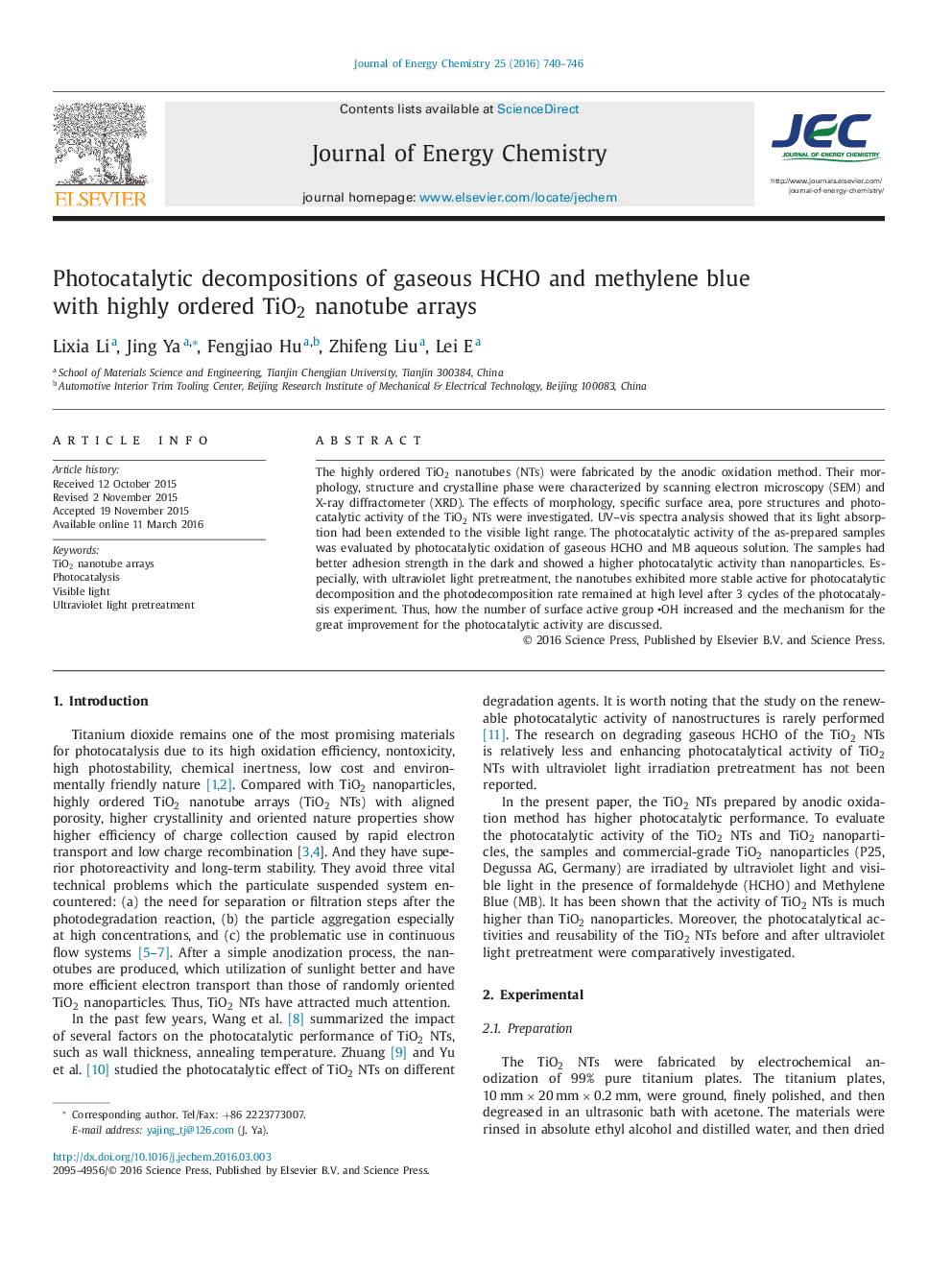| Article ID | Journal | Published Year | Pages | File Type |
|---|---|---|---|---|
| 63679 | Journal of Energy Chemistry | 2016 | 7 Pages |
The highly ordered TiO2 nanotubes (NTs) were fabricated by the anodic oxidation method. Their morphology, structure and crystalline phase were characterized by scanning electron microscopy (SEM) and X-ray diffractometer (XRD). The effects of morphology, specific surface area, pore structures and photocatalytic activity of the TiO2 NTs were investigated. UV–vis spectra analysis showed that its light absorption had been extended to the visible light range. The photocatalytic activity of the as-prepared samples was evaluated by photocatalytic oxidation of gaseous HCHO and MB aqueous solution. The samples had better adhesion strength in the dark and showed a higher photocatalytic activity than nanoparticles. Especially, with ultraviolet light pretreatment, the nanotubes exhibited more stable active for photocatalytic decomposition and the photodecomposition rate remained at high level after 3 cycles of the photocatalysis experiment. Thus, how the number of surface active group •OH increased and the mechanism for the great improvement for the photocatalytic activity are discussed.
Graphical abstractHighly ordered TiO2 NTs have great photocatalytic activity to degrade gaseous HCHO and MB solution in ultraviolet light.Figure optionsDownload full-size imageDownload as PowerPoint slide
